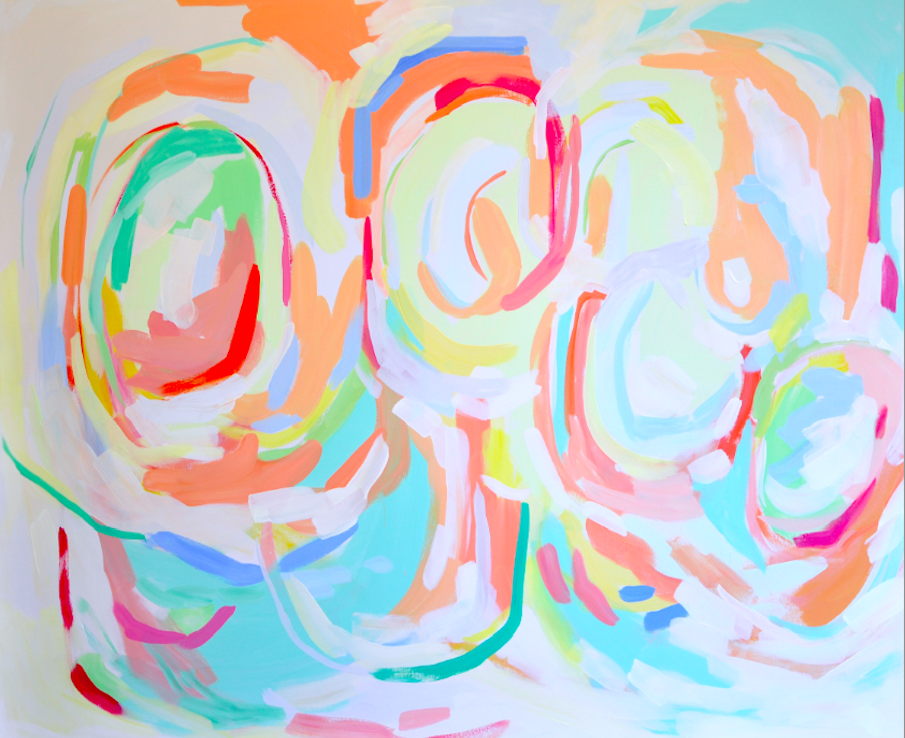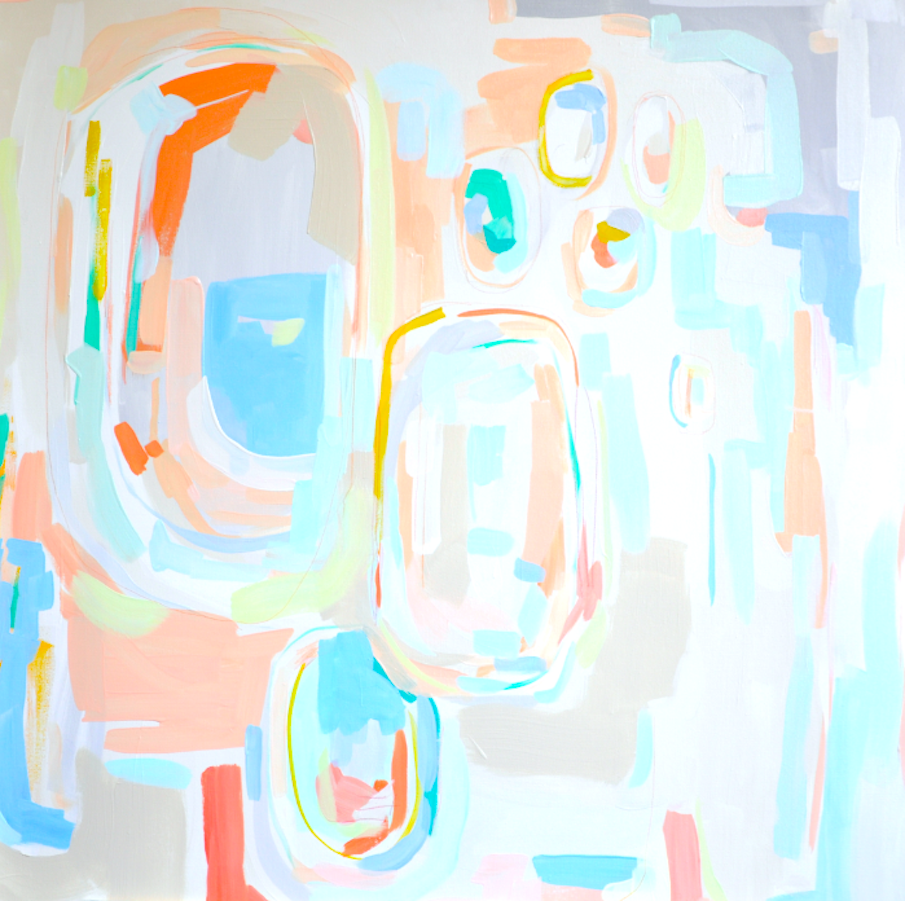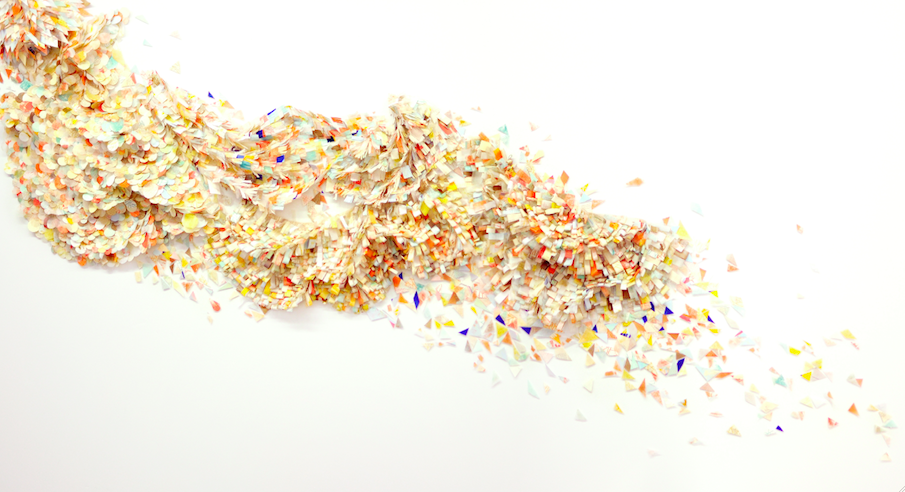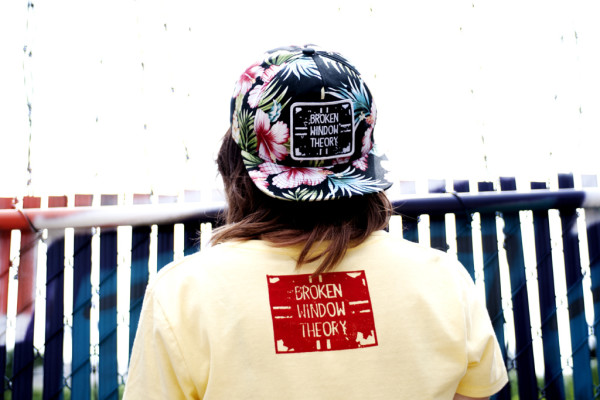Brittany of Britt Bass might consider herself somewhat of an “unknown” artist, but we beg to differ. As embarrassingly huge fans of her striking, bright abstract paintings, we wanted to find more about her inspirations and creative process. (As it turns out, there’s a self-described, “creepy self-portrait bust” involved in there somewhere.)
Brittany always knew she wanted to create things. And, as she grew up in a suburb just outside of Atlanta, it started to become a little clearer what exactly those “things” she wanted to create were. She currently paints and makes installations full-time, as well as maintaining a showroom at the Goat Farm Arts Center.
CommonCreativ sat down with Brittany to find out a little more about the creative scene in ATL, and how she became an artistic pro.
CommonCreativ: You’ve turned being an artist into a successful career—something many artists aspire to do. What steps did you take to make that happen?
Britt Bass: I think taking the mental plunge from part-time hobby to full-time artist made all the difference. As soon as I decided to really focus on my work and make a lot of it, I saw a change in my product—and others took notice.
CC: Any advice for other artists looking to do the same?
BB: Make a lot of work, good and bad. Paint over and rework the bad, take notes on why the good is good, and keep going!
CC: What’s your creative process?
BB: My process starts with a color or shape but it’s quickly taken over by intuition and aesthetics. I like to work on several paintings at once with lots of layers. I have to start with a clean studio, fresh water, clean brushes, generally a playlist in the background. I’ll hang up anywhere from 5-10 canvases to paint on at the same time. Then, I’ll choose a few tube colors to start with and mix up different tints and colors and go to town! I like to start by blocking off large areas, and then work smaller and hone in on details. Sometimes, I’ll start with pencil or pastel to get my basic composition down.
CC: How do your paintings begin?
BB: I begin with a limited palette and large brush strokes blocking off the initial composition. I generally start with a palette in mind or even a few shapes I know I’d like to use. I really have no idea what they will end up like, but as I continue to layer and omit, intuition takes over and towards the end I have a vision of how I want it to end up.
CC: What is it about making art that you find most fulfilling?
BB: Finishing the work, hanging it up, and liking it. I hope my paintings make people feel good. That sounds simple and trivial when I say it out loud- but I really mean it. My hope is that viewers will feel relaxed, or calm, or happy, or exited, or whatever kind of joyful emotion.
CC: How do you know when a piece is complete?
BB: I like to work quickly in layers—I’ll walk away from it every so often so I can come back to it with fresh eyes. My intuition and the guidance of the painting kind of work together until everything starts to “come together” in my eyes. Once I think it’s done I like to leave it for a day or two and make sure I still think it looks finished. Sometimes, I’ll completely paint it white and start over!
CC: What inspires you?
BB: Organic forms, palettes from memory, and design elements. I really love the shadows trees make on buildings, the negative space between the leaves—often times the composition is so beautiful. You can find a lot of rock and gem inspiration in my work too, even some stalactite and stalagmite forms. I always like to go back to the shape of moss and bark. Chris Hocking, a college professor of mine, once encouraged me to mix the soft bendy organic shapes with some jagged geometric nuances. I struggled with this concept for months but it was the best advice I’ve ever [been given].
CC: Your style is bright, bold and often abstract. What drew you toward these characteristics?
BB: I tend to make work that I like and that I would be willing to hang in my own house—this style [is] what I aesthetically prefer. My palettes are almost always inspired by my every day life. Recently, while packing for a trip, I noticed my curated garments looked so nice together—I made sure to start a few paintings in those colors before leaving town! Going on walks is one of my most favorite ways to scout for palettes. On my walks, I’ll snap photographs with my phone of palettes I find, whether it is a tree branch, or a bloom, or an old house, or graffiti on a sidewalk.
CC: What’s your favorite thing you’ve ever made? This includes kindergarten art projects.
BB: I have this creepy self-portrait bust I made in college out of clay—it stands on my mantel by the front door and it’s very regale.
CC: Are you a huge fan of any ATL artists?
BB: YES! I think the best are in ATL: Erin McIntosh, Michelle Armas, and Sally King Benedict. Erin McIntosh is a local Athens artist and happens to be an old professor of mine. She is so inspiring. She does such a great job staying current, very well read, and is constantly learning about other artists and their processes. She has a wide breadth of work which I really appreciate, and also first taught me the importance of layering and adding and omitting in my paintings. Michelle Armas is a local Atlanta artist whom I most admire for her fun and fresh paintings—I love her use of color. So bold! And Sally King Benedict, also an Atlantan, has the most gorgeously simple and breathtaking compositions.
To see more of Britt Brass’ work, visit her website and her online shop.








